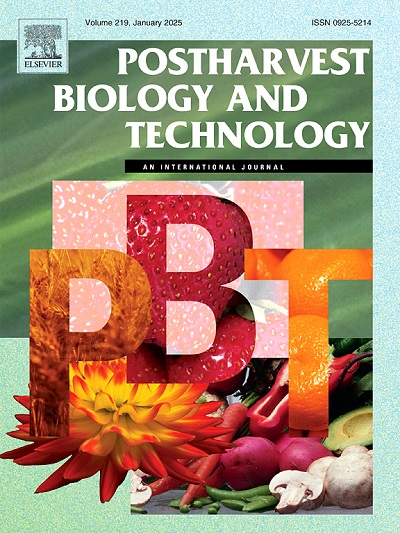电刺激作为鲜食葡萄采后大肠杆菌污染管理的新选择
IF 6.8
1区 农林科学
Q1 AGRONOMY
引用次数: 0
摘要
随着全球人口的增长,粮食需求不断上升,但每年都有大量粮食因腐败而损失。不可预测的天气、虫害和病原体的压力以及储存不当导致近三分之一的食物被浪费。减少腐败对于满足人口需求、保护资源和加强粮食安全至关重要。采后抗菌剂的应用可以有效地减少腐败;然而,人们越来越多地寻求可持续的替代品,因为它们对环境的影响较小。这项研究提出了一个实验室开发的装置,使用低电流来抑制大肠杆菌在水果上的生长。当交流电流(50 mA)应用于大肠杆菌污染的葡萄时,99% %的细菌被消除。12天后,目视检查显示,未经处理的、受污染的葡萄已经腐烂,而经过电处理的葡萄在外观上与未受污染的葡萄相似。定量菌落形成单位(CFU)减少试验和对葡萄皮的扫描电镜(SEM)分析证实了这些发现,显示出处理过的葡萄明显的细菌结构损伤,表明电流在灭活大肠杆菌方面是有效的。这些有希望的结果突出了这种环保净化策略的潜力,并使其适用于葡萄和其他水果和蔬菜。本文章由计算机程序翻译,如有差异,请以英文原文为准。
Electrical stimulation of table grape berries as new alternative for postharvest Escherichia coli contamination management
With a growing global population, food demand is rising, yet large amounts of food are lost to spoilage each year. Unpredictable weather, pest and pathogen pressures, and poor storage contribute to nearly one-third of all food going to waste. Reducing spoilage is crucial to meet population needs, conserve resources, and enhance food security. The application of postharvest antimicrobial agents can efficiently reduce spoilage; however, sustainable alternatives, are increasingly being sought for their lower environmental impact. This study presents a lab-developed setup that uses low electrical currents to inhibit Escherichia coli growth on fruit. When an alternating current (50 mA) was applied to Escherichia coli-contaminated grapes, 99 % of the bacteria were eliminated. After 12 days, visual inspection showed that untreated, contaminated grapes had rotted, while the electrically treated ones remained visually similar to uncontaminated grapes. Quantitative Colony Forming Unit (CFU) reduction assays and Scanning Electron Microscopy (SEM) analysis of grape skins confirmed these findings, showing clear bacterial structural damage on treated grapes, indicating the electrical current’s effectiveness in deactivating Escherichia coli. These promising results highlight the potential of this eco-friendly decontamination strategy and make it adaptable to grapes and other fruits and vegetables.
求助全文
通过发布文献求助,成功后即可免费获取论文全文。
去求助
来源期刊

Postharvest Biology and Technology
农林科学-农艺学
CiteScore
12.00
自引率
11.40%
发文量
309
审稿时长
38 days
期刊介绍:
The journal is devoted exclusively to the publication of original papers, review articles and frontiers articles on biological and technological postharvest research. This includes the areas of postharvest storage, treatments and underpinning mechanisms, quality evaluation, packaging, handling and distribution of fresh horticultural crops including fruit, vegetables, flowers and nuts, but excluding grains, seeds and forages.
Papers reporting novel insights from fundamental and interdisciplinary research will be particularly encouraged. These disciplines include systems biology, bioinformatics, entomology, plant physiology, plant pathology, (bio)chemistry, engineering, modelling, and technologies for nondestructive testing.
Manuscripts on fresh food crops that will be further processed after postharvest storage, or on food processes beyond refrigeration, packaging and minimal processing will not be considered.
 求助内容:
求助内容: 应助结果提醒方式:
应助结果提醒方式:


